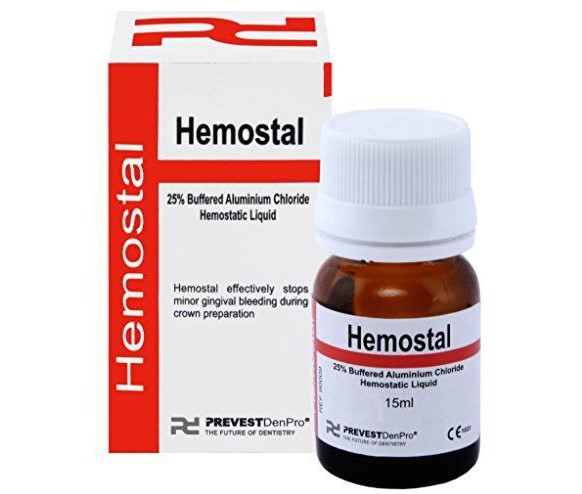Impregnating chemicals
The use of any retraction system requires healthy periodontal tissue that has not been damaged or injured during tooth preparation. The selection of a retraction technique depends on the operator's experience, the periodontal biotype, and, in the authors' view, the principle of choosing the least invasive technique that will produce the most effective results. Based on these criteria, mechanical or mechanicochemical methods can be used, but surgery, whether with a rotating instrument or electric scalpel, should not be considered because of the clinical difficulties and the uncertainty of outcome.
Mechanicochemical techniques combine mechanical and chemical interventions. The term often refers to the use of retraction cords impregnated with solutions that have hemostatic or vasoconstriction effects, such as epinephrine, aluminum chloride, aluminum sulfate, and ferrous sulfate and their various combinations. The cords are used to keep the chemicals in contact with the tissue and confine them to the application site. Thus, enlargement of the gingival sulcus and fluid control can be readliy accomplished.
Impregnating chemicals
For mechanicochemical techniques, retraction cords are impregnated with chemical solutions that augment the effect of retraction and hemostasis. However, animal studies using dogs have shown that chemical solutions cause a certain amount of inflammation of the connective tissue. Among the most frequently used solutions are epinephrine; various astringents, such as aluminum chloride, aluminum sulfate, and ferrous sulfate; and combinations of these compounds.
Aluminum chloride is a commonly used astringent that causes no adverse systemic effects and only a few undesired localized effects. It is usually found marketed as a 14% solution. The hemostasis and retraction that are provided by aluminum chloride are inferior to those of epinephrine; moreover, if used at high concentrations, this chemical can cause significant postoperative paramarginal tissue loss. However, it can be used on damaged tissues with only moderate tissue loss after healing.
The impregnating solutions can inhibit the polymerization of impression material when they come in contact; a similar phenomenon has been found when latex gloves are used with polyvinyl siloxanes.
Aluminum chloride is compatible with polyvinyl siloxanes, but it inhibits the reaction of the polyether chains, and if they remain in contact, the impression material loses its contours and detail and will appear melted. Many clinicians continue to use aluminum chloride as a hemostatic agent, making it necessary to carefully clean the surface of the cord with cotton pellets and water spray to reduce or eliminate the polymerization interference.
Various combinations of astringents can also be used for retraction. The combination of aluminum sulfate and aluminum chloride seems to provide better results than either of the two used in combination with epinephrine.
You can review Retraction cords... Why? When? How?









No Comment to " Impregnating chemicals "